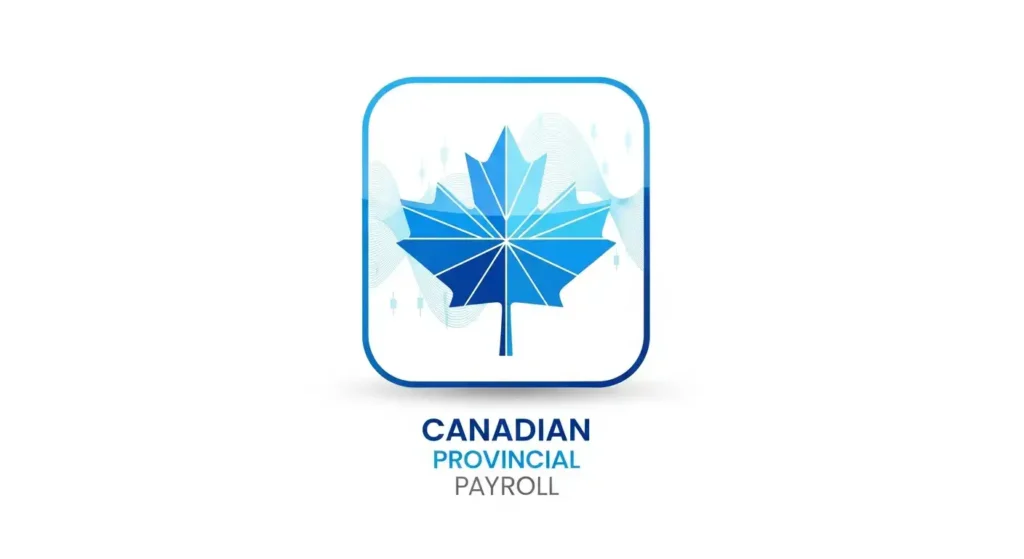
Navigating Canadian Provincial Payroll
For Canadian businesses operating nationwide, managing payroll is far from a one-size-fits-all task. Canada's payroll landscape is a complex mosaic of 13 distinct provincial and territorial legal frameworks. Understanding these crucial differences in Canadian provincial payroll regulations—from minimum wage and statutory holidays to provincial income tax and employer health levies—is essential for ensuring compliance, managing costs, and maintaining a competitive edge. This guide provides a comprehensive analysis of the inter-provincial payroll differences that impact every national employer.
TL;DR
Payroll in Canada isn't governed by a single national standard. Each of the 13 provinces and territories has its own rules, creating major challenges for national businesses. Key differences include:
- Minimum Wage: Rates vary wildly, from $15.00/hour in some provinces to over $19.00/hour in others, with many jurisdictions indexing rates to inflation.
- Taxes & Deductions: Provincial income tax structures range from Alberta's relatively flat system to the highly progressive brackets in BC and Newfoundland. Quebec operates its own pension plan (QPP) and tax system, requiring separate administration.
- Hidden Costs: Five provinces levy an Employer Health Tax, adding a significant percentage to payroll costs that doesn't exist elsewhere. Workers' Compensation premiums also vary by province and are influenced by your company's safety record.
- Employment Standards: Rules for overtime (daily vs. weekly triggers), vacation escalation, and public holidays differ significantly, directly impacting labour costs for identical work schedules across provincial lines.
- The Quebec Exception: Quebec is the most distinct payroll environment, with its own pension plan (QPP), parental insurance (QPIP), and tax agency (Revenu Québec), demanding unique processes.
A proactive strategy for national employers requires a highly configurable payroll system and a clear understanding of the total, fully-loaded cost of labour in every jurisdiction.
Article Contents
- Foundational Payroll Standards: Minimum Wage and Pay Frequency
- Statutory Deductions: A National and Provincial Overview
- Employer-Paid Premiums: The Hidden Costs of Payroll
- Employment Standards and Their Impact on Remuneration
- Administrative Compliance: Pay Statement Requirements
- Jurisdictional Synthesis and Strategic Recommendations
Foundational Payroll Standards: Minimum Wage and Pay Frequency
The bedrock of any payroll system is formed by two fundamental standards: the minimum wage an employee can be paid and the frequency with which they must receive their earnings. In Canada, these are dictated by each province and territory, creating a complex and dynamic environment for national employers.
Minimum Wage Rates: A Complex and Evolving Landscape
The idea of a single "minimum wage" in Canada is a misnomer. In reality, there is a collection of rates that vary by jurisdiction, employee category, and the mechanism for future adjustments. For 2025, general rates show a wide disparity, from $15.00 in Alberta and Saskatchewan to $19.75 in Nunavut. Many provinces, like British Columbia and Yukon, have also adopted inflation-based annual adjustments, while others, like Alberta, have static rates that change only through specific legislative action.
Complicating matters further are special wage categories for students, tipped employees, and even gig workers, requiring highly granular payroll systems. The federal minimum wage, $17.75 as of April 1, 2025, only applies to federally regulated industries and acts as a floor—if the provincial rate is higher, the higher rate prevails.
| Jurisdiction | General Hourly Rate (2025) | Effective Date | Notes |
|---|---|---|---|
| Federal | $17.75 | April 1, 2025 | Applies if provincial/territorial rate is lower. |
| Alberta | $15.00 | October 1, 2018 | Student rate (under 18): $13.00/hr. |
| British Columbia | $17.85 | June 1, 2025 | Annual CPI adjustment. Gig worker rate: $20.88/hr. |
| Manitoba | $16.00 | October 1, 2025 | Rate is $15.80 from Oct 1, 2024. |
| New Brunswick | $15.65 | April 1, 2025 | Annual CPI adjustment. |
| Newfoundland & Labrador | $16.00 | April 1, 2025 | Annual CPI adjustment. |
| Northwest Territories | $16.95 | September 1, 2025 | Annual adjustment (CPI & AHW). |
| Nova Scotia | $15.70 ($16.50 on Oct 1) | April 1, 2025 | Future increases tied to CPI + 1%. |
| Nunavut | $19.75 | September 1, 2025 | Annual adjustment. |
| Ontario | $17.60 | October 1, 2025 | Rate is $17.20 from Oct 1, 2024. Student rate: $16.20/hr. |
| Prince Edward Island | $16.50 | October 1, 2025 | $17.00 on Apr 1, 2026. |
| Quebec | $16.10 | May 1, 2025 | Tipped employee rate: $12.90/hr. |
| Saskatchewan | $15.35 | October 1, 2025 | Rate is $15.00 from Oct 1, 2024. |
| Yukon | $17.94 | April 1, 2025 | Annual CPI adjustment. |
Pay Frequency and Timing
Provinces also legislate how often employees must be paid. Jurisdictions like British Columbia and Quebec require payment at least every 16 days. Others, including Manitoba and Nova Scotia, mandate payment at least twice per month. In contrast, Alberta allows for monthly pay periods. Ontario is the most flexible, allowing employers to establish any regular pay period. These rules impact corporate cash flow and require a strategic decision: standardize to the most frequent schedule (e.g., bi-weekly) for consistency, or vary by province to optimize administrative costs.
Statutory Deductions: A National and Provincial Overview
A core payroll function is withholding and remitting statutory deductions. While some are federal, the largest component—income tax—is a shared jurisdiction, leading to significant variations in net pay for employees earning identical salaries in different parts of the country.
Federal and Provincial/Territorial Income Tax
Canada uses a progressive tax system, where income is taxed in brackets at increasing rates. An employee's total tax is the sum of federal and provincial tax. While the federal brackets are the same for everyone (except Quebec's unique calculation), each province and territory layers its own distinct system on top. Alberta has a relatively flat system with fewer brackets, while provinces like British Columbia and Newfoundland and Labrador have highly progressive, multi-bracket structures. This directly impacts after-tax income and can influence decisions on where to locate key personnel.
| Jurisdiction | Lowest Bracket & Rate | Highest Bracket & Rate |
|---|---|---|
| Federal | 15.0% on first $57,375 | 33.0% on income over $253,414 |
| Alberta | 8.0% on first $60,000 | 15.0% on income over $362,961 |
| British Columbia | 5.06% on first $49,279 | 20.50% on income over $259,829 |
| Manitoba | 10.80% on first $47,564 | 17.40% on income over $101,200 |
| New Brunswick | 9.40% on first $51,306 | 19.5% on income over $190,060 |
| Newfoundland & Labrador | 8.7% on first $44,192 | 21.8% on income over $1,128,858 |
| Ontario | 5.05% on first $52,886 | 13.16% on income over $220,000 |
| Quebec | 14.00% on first $53,255 | 25.75% on income over $129,590 |
| Saskatchewan | 10.5% on first $53,463 | 14.5% on income over $152,750 |
Canada Pension Plan (CPP) and Quebec Pension Plan (QPP)
The Canada Pension Plan (CPP) is a mandatory social insurance program for retirement, disability, and death benefits. Contributions are shared between employees and employers. For 2025, the contribution rate is 5.95% each. However, Quebec operates its own parallel program, the Quebec Pension Plan (QPP), with a higher contribution rate of 6.40%. This "Quebec Exception" requires entirely separate payroll administration, from calculations and remittances to year-end reporting (T4 vs. T4/RL-1).
Employment Insurance (EI)
Employment Insurance (EI) is a federal program providing temporary income support. Premiums are paid by employees and employers, with the employer contributing 1.4 times the employee's premium. Again, Quebec operates a distinct system. Because the province runs its own parental benefits program (QPIP), both employees and employers in Quebec pay a lower EI premium rate. They then pay separate premiums into QPIP, further reinforcing the unique administrative burden for employers in Quebec.
Employer-Paid Premiums: The Hidden Costs of Payroll
Beyond deductions from employee pay, employers face mandatory, employer-paid premiums and taxes. These "hidden costs" are a significant and highly variable component of the total payroll burden, differing dramatically across provinces.
Provincial Health Levies
One of the biggest cost differentiators is the Employer Health Tax (EHT), a payroll tax levied on employers to fund public healthcare. This tax only exists in five provinces: British Columbia, Manitoba, Newfoundland and Labrador, Ontario, and Quebec. The remaining jurisdictions have no comparable tax, creating a substantial cost advantage for businesses there. The tax rates and exemption thresholds vary, with some provinces like BC and Manitoba having punitive "notch" provisions where exceeding a payroll threshold can trigger a massive, disproportionate tax increase.
Workers' Compensation Premiums
All provinces mandate no-fault workplace injury insurance, funded exclusively by employers through Workers' Compensation Board (WCB) premiums. Premiums are based on a rate per $100 of assessable payroll, up to a maximum assessable earnings amount per employee, which varies by province. Crucially, an employer's rate is adjusted based on their individual claims history through an "experience rating" system. This transforms WCB premiums from a fixed tax into a controllable expense, creating a direct financial incentive for strong workplace health and safety programs.
| Jurisdiction | 2025 Maximum Assessable Earnings per Employee ($) |
|---|---|
| Alberta | $106,400 |
| British Columbia | $116,700 (2024 figure) |
| Manitoba | $167,050 |
| New Brunswick | $84,200 |
| Newfoundland & Labrador | $79,345 |
| Northwest Territories | $112,600 |
| Nova Scotia | $76,300 |
| Nunavut | $113,900 |
| Ontario | $117,000 |
| Prince Edward Island | $82,900 |
| Quebec | $98,000 |
| Saskatchewan | $104,531 |
| Yukon | $104,975 |
Other Jurisdictional Levies
Some jurisdictions have unique taxes. The most prominent is the Northwest Territories Payroll Tax, a 2% tax on an employee's gross remuneration earned in the territory. While it's a tax on employee income, the employer is required to withhold and remit it, adding another layer of administrative responsibility.
Employment Standards and Their Impact on Remuneration
Provincial and territorial Employment Standards Acts introduce a host of rules governing non-standard work hours, paid time off, and termination pay. These differences are a primary driver of payroll complexity and cost variability.
Overtime Regulations
While the standard overtime rate is almost universally 1.5 times the regular pay, the threshold that triggers it varies dramatically.
- Daily and Weekly Triggers: British Columbia is one of the most stringent, requiring overtime for hours over 8 in a day or 40 in a week.
- Weekly-Only Triggers: Ontario and Alberta set the threshold at 44 hours per week, while Nova Scotia and PEI have a high threshold of 48 hours per week.
Vacation Entitlements
While most jurisdictions start with 2 weeks of vacation (4% vacation pay), the rate at which entitlements escalate with service creates different long-term liabilities. An employee becomes entitled to 3 weeks of vacation after just 3 years in Quebec, after 5 years in provinces like Ontario and BC, but not until 15 years of service in Newfoundland and Labrador. This impacts the cost of retaining tenured employees.
| Jurisdiction | Overtime Threshold | Vacation Entitlement (Weeks by Years of Service) | # of Stat. Holidays |
|---|---|---|---|
| Alberta | > 8/day or > 44/wk | 2 wks (<5 yrs); 3 wks (≥5 yrs) | 9 |
| British Columbia | > 8/day or > 40/wk | 2 wks (<5 yrs); 3 wks (≥5 yrs) | 11 |
| Manitoba | > 8/day or > 40/wk | 2 wks (<5 yrs); 3 wks (≥5 yrs) | 9 |
| Newfoundland & Labrador | > 40/wk | 2 wks (<15 yrs); 3 wks (≥15 yrs) | 6 |
| Ontario | > 44/wk | 2 wks (<5 yrs); 3 wks (≥5 yrs) | 9 |
| Quebec | > 40/wk | 2 wks (<3 yrs); 3 wks (≥3 yrs) | 8 |
| Saskatchewan | > 8-10/day or > 40/wk | 3 wks (<10 yrs); 4 wks (≥10 yrs) | 10 |
Administrative Compliance: Pay Statement Requirements
A core part of compliance is providing employees with a clear and accurate pay statement. While basic information like gross earnings, deductions, and net pay is universal, jurisdictions impose unique requirements. For example, Quebec requires the employee's job title to be listed, and British Columbia requires a detailed breakdown of regular and overtime hours and rates. To ensure compliance everywhere, a national employer's best strategy is to adopt a "highest common denominator" approach, creating a single, comprehensive pay statement template that includes all informational fields required by any province.
Jurisdictional Synthesis and Strategic Recommendations
Canadian payroll is not a monolithic entity. Success for national employers hinges on moving beyond simple compliance to a strategic approach that recognizes these fundamental differences in cost and complexity.
Comparative Analysis Summary
- Tier 1 (Most Complex): Quebec. Its separate pension plan (QPP), parental insurance (QPIP), and tax system make it the most administratively burdensome jurisdiction.
- Tier 2 (High Regulation/Cost): British Columbia and Ontario. Both have a significant Employer Health Tax. BC's daily overtime rules and Ontario's severance pay requirements add notable cost and complexity.
- Tier 3 (Standard with Variations): The Prairie and Atlantic Provinces. These jurisdictions are generally less complex, with key differences in overtime thresholds and vacation rules.
- Tier 4 (Unique/High Wage): The Territories. Characterized by the highest minimum wages and unique levies like the NWT's payroll tax.
Recommendations for National Employers
- Invest in a Sophisticated and Configurable Payroll System: A generic solution is inadequate. Your system must handle multiple provincial tax tables, distinct overtime rules, varied vacation accruals, and the unique requirements of Quebec.
- Adopt a Hybrid Approach to Policy Harmonization: Standardize administrative functions like pay frequency and pay statement content to ensure compliance. However, adapt cost-sensitive policies like overtime and vacation to each province to control expenses.
- Integrate Payroll Data into Strategic Financial Planning: Model the total, fully-loaded cost of labour—including hidden costs like health levies and WCB premiums—when making decisions about expansion or talent acquisition.
- Implement a Robust Compliance and Audit Program: Regularly audit high-risk areas like overtime calculations, stat holiday pay, and vacation accruals to ensure accuracy across all jurisdictions.
Simplify Your Business Planning
Manually calculating statutory holidays and deadlines across different provinces can be time-consuming and prone to error. Use our powerful calculator to instantly determine key dates and simplify your compliance planning.
Use the Canadian Business Day CalculatorDisclaimer: The content provided on this webpage is for informational purposes only and is not intended to be a substitute for professional advice. While we strive to ensure the accuracy and timeliness of the information presented here, the details may change over time or vary in different jurisdictions. Therefore, we do not guarantee the completeness, reliability, or absolute accuracy of this information. The information on this page should not be used as a basis for making legal, financial, or any other key decisions. We strongly advise consulting with a qualified professional or expert in the relevant field for specific advice, guidance, or services. By using this webpage, you acknowledge that the information is offered “as is” and that we are not liable for any errors, omissions, or inaccuracies in the content, nor for any actions taken based on the information provided. We shall not be held liable for any direct, indirect, incidental, consequential, or punitive damages arising out of your access to, use of, or reliance on any content on this page.
About The Author

Roger Wood
With a Baccalaureate of Science and advanced studies in business, Roger has successfully managed businesses across five continents. His extensive global experience and strategic insights contribute significantly to the success of TimeTrex. His expertise and dedication ensure we deliver top-notch solutions to our clients around the world.
Time To Clock-In
Start your 30-day free trial!
Experience the Ultimate Workforce Solution and Revolutionize Your Business Today
- Eliminate Errors
- Simple & Easy To Use
- Real-time Reporting

Saving businesses time and money through better workforce management since 2003.
Copyright © 2025 TimeTrex. All Rights Reserved.
